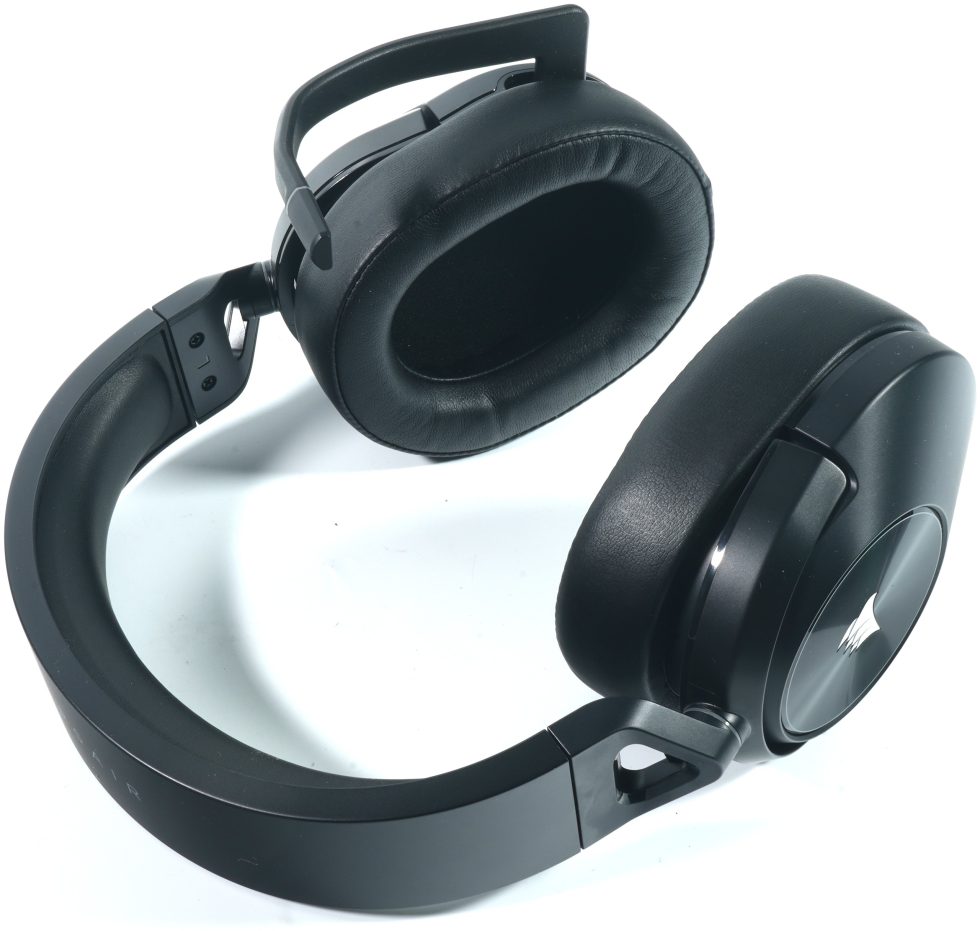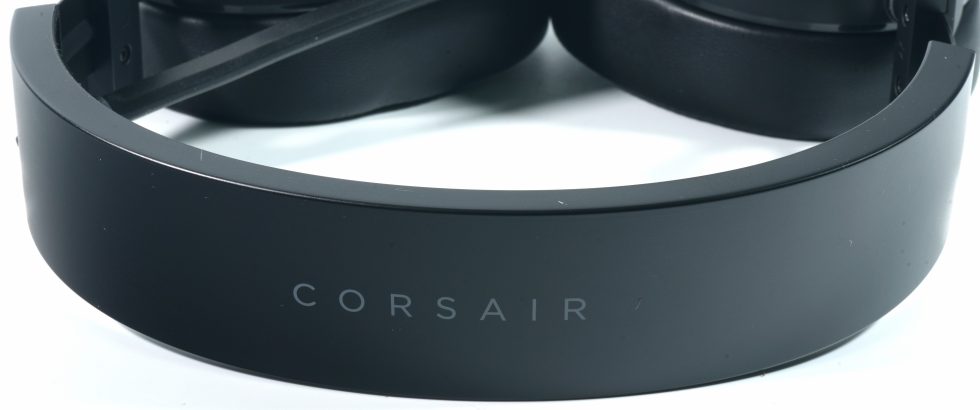After all the technical details, we finally come to the most important thing: How does the headset actually sound? We now continue where it hurts a little more: namely, the individual hearing test. The headset was diligently played in, so this argument is not applicable. I use my Tidal playlist with classical music, jazz, rock, electronic music and various vocals (soul, choir music), even if after 6 hours a 1-hour loading break must take place.
Bass range
Music: The Corsair HS55 Wireless Core doesn’t even fail at subcontracting, but it does fail a bit at contouring, which degenerates into acoustic mud wrestling without manual tweaking on an equalizer. The drivers have an extreme tendency to resonate, which is not pleasing. The contraoctave including the big bass drum is dominantly present and unfortunately also completely spongy and imprecise. It hums and scrapes due to ugly resonances, which could have been mitigated by damping. The bass is there, but for some it is a bit too massive and pompously inflated. Listening habits certainly play a big role here as well. The level stability is okay, but not extremely high and it also lives from the resonance thunderstorm.
Gaming: For gaming, the grenades could boom a bit less massive and drier, but as long as you don’t overdo it with the level, you can still hear everything above the mids in parallel, but they are pushed away by the bass up to the upper end. The differentiation of the individual sound layers and frequency ranges is hardly possible. Everything is loud enough, but also completely imprecise. In short: an ideal bass bomber for the TikTok generation, which only knows compressed sound grit anyway.
Music: This area seems too greased and completely overdone. The male vocals are modeled far too richly and are far from a good fundamental base. The instruments are also tied up too low, which doesn’t sound completely unpleasant per se, but seems much too intrusive and simply slays a lot in the higher registers. Despite everything, the Corsair HS55 Wireless Core sounds a bit flat because it simply lacks detail and precision.
Gaming: The bathtub scuffing is really a matter of taste, because even male voices get a lot of such a strong foundation here. Some will wonder if the voice actors in the game are still the same, because in the end they all have way too much fullness.
Midrange
Music: This still sounds too full-bodied and also a bit too warm. Many details of the fundamental frequencies stray far from the original, blurring into a fireside ambience. You have to like it, of course, but this style of play is just too obese for most. Female vocals no longer sound confident in the foundation, but just as stuffed as the male ones. Too much is too much, sorry.
Gaming: The female vowels are intelligible but also far too dominant in the foundation. The fundamental range is simply too muddy, which also takes its toll on gaming because it smears and drowns out many details in higher frequency ranges. The resolution of the drivers is simply not good enough to reproduce both accurately.
Music: One first falls into a small valley and then increases again up to 1 KHz, which is rather conducive to the differentiated reproduction in this range. The stage is sufficient (although not brutely wide) and the subjectively perceived quality of the spatial resolution is on an average level. However, high levels with a large number of sources playing together are counterproductive, as localization then becomes increasingly difficult. So you have to turn it down or live with the slight slush. This also applies to the booming basses, which destroy everything here when they occur.
Gaming: Here, the level is not quite as critical and much is as a certain group of gamers would certainly like it. The localization of the sound sources is, as long as the bass does not destroy everything again, quite sufficient and you also know where you are walking and what is going on around you.
Tweeter range
Music: The playback is below average in terms of quality and even a bit muffled. It relies on the much too dominantly pronounced mids, which becomes a disadvantage here, because you can’t win this battle that way. The speech intelligibility as well as the quality of the vocals during recognition also suffer a bit and it always gets better when less is happening downstairs. Matter of taste, as always.
Gaming: Exactly the same applies here, the result is not quite convincing in gaming either. Normally gamers will find a peak here, which can make a lot of things more audible, but the expression should have been much more pronounced here (see measurement of the frequency response)
Music and gaming: The treble is acceptable, but a bit too restrained. However, this goes on the extreme offensive again at 6 to 7 kHz. This creates an exaggeration that is also known and accepted as the so-called “Beyer Peak”, if it is done well. But: Sibilants and blow-off noises are much too prominent in the Corsair HS55 Wireless Core in this small frequency range and everything slides strongly into the metallic and peaky. Icy treble air is already formed there. From about 10 KHz, however, the super high frequency runs out of air and from about 12 KHz it is really dark. Too bad. If there had been a bit more life here, one wouldn’t have to criticize the spec sheet, which is so incorrect and probably refers to the drivers as such, but not the final product.
Summary and conclusion
Where should I place the Corsair HS55 Wireless Core now? The problem with such a conclusion is always that I have to make the judgment adequately for the price. If the street price had been around 60 to 70 Euros (and there are certainly alternatives), the Corsair HS55 Wireless Core would not have been an absolute recommendation as a bang for the buck, but it would have certainly even been a top place in the “can do” category. But for just under 130 euros? The bar is set very high. In addition, Corsair has probably decided to only sell the good piece via Amazon. This almost looks like an insight that they probably don’t want to damage the otherwise good wireless headset portfolio with this.
Visually and haptically, there is nothing to complain about, even though the material could certainly have been of a higher quality in this price range. The wearing comfort is good, it sits comfortably and if you remove sweat from time to time, the Corsair HS55 Wireless Core can be worn for several hours. The battery lasts quite long and you can easily play for 5-6 hours at a stretch. If you take a more moderate approach, you can even get through the day with music and phone calls. After an hour everything is fully charged and after 15 minutes of charging you could even get by with it for a longer time.
The microphone is a disaster, there is nothing to gloss over. However, the problem is not the capsule, but the completely excessive compression during radio transmission. This could have been done better without Slipstream, guaranteed. Sound-wise, the Corsair HS55 Wireless Core is a typical gaming bass bomber, which will certainly appeal to a certain target audience. However, there are already headphones for 130 Euros that could do that even better. And headsets, too, I won’t hide that here.
With just under 130 Euros, Corsair has registered the HS55 Wireless Core in the wrong weight class and not only picked up a black eye in the test. I can tolerate a lot, as long as the relation to the purchase price is maintained. However, the Corsair HS55 Wireless Core is currently at least 50 Euros too expensive for what it offers.



































7 Antworten
Kommentar
Lade neue Kommentare
Veteran
1
Veteran
1
Veteran
1
Veteran
Alle Kommentare lesen unter igor´sLAB Community →